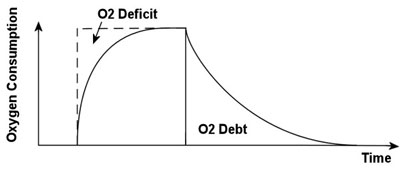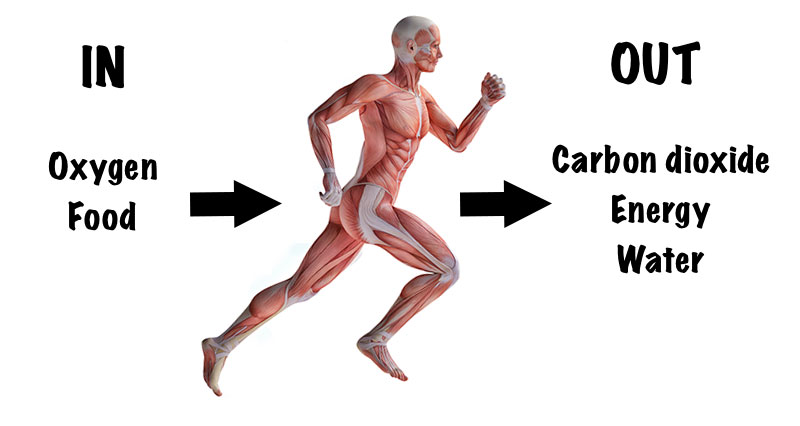Oxygen debt is the oxygen your body needs to recover after anaerobic exercise. It is more than just the oxygen you needed whilst exercising because it takes energy to replace the oxygen deficit.
When you have a short intense burst of exercise such as sprinting you generate energy for this anaerobically, or without oxygen. When you stop exercising you are still breathing heavily. This is your body taking in extra oxygen to ‘repay’ the debt.
Well, that is the simple solution but there is a little more to it. You have ‘interest’ to pay on the debt in the form of additional oxygen.
True, your body has worked anaerobically and will have produced energy without some of the oxygen it would normally have used performing a low-intensity exercise such as slow steady running. The difference between the oxygen your body needs and what it actually absorbs during the sudden sprint is oxygen deficit.
When you stop sprinting and start to recover you will actually need more oxygen to recover than your body would have liked to use had enough been available. This is Excess Post Exercise Oxygen Consumption.
Why oxygen debt is more than oxygen deficit
Why does it take more oxygen to recover? You need to replace the oxygen the body needed but couldn’t get (oxygen deficit). As a result, your breathing rate and heart rate increase to remove carbon dioxied (CO2). This needs more oxygen.
Body temperature and the metabolic rate increases and this needs more oxygen. Adrenaline and Noradrenaline increases which also increases oxygen consumption. So after exercise, there are other factors causing an increase in oxygen needs as well as repaying the lack of oxygen during exercise.

The chart above shows how the amount of oxygen used by the body changes over time. In the beginning, the body works anaerobically leaving an oxygen deficit. Over time oxygen consumption levels out to a steady-state.
After exercise, the oxygen is paid back (oxygen debt). Notice the area of oxygen debt is greater than the area of oxygen deficit for the reasons stated above.
Lactic acid and oxygen debt
Lactic acid is a by-product of exercising without using oxygen (anaerobically). It is essential your body removes it, but it is not necessarily a waste product. Your body recycles Lactic acid into other useful chemicals.
For example, during an 800m race the heart may get half its energy from lactic acid. This converts back to pyruvic acid and used as energy by the heart and other muscles.
Up to 70% of lactic acid produced oxidizes, 20% is converts to glucose (energy) in the liver and 10% converts to protein.
How long does it take to remove lactic acid?
- About 1 hour if cooling down with gentle exercise
- It can take 2 hours or more if you don’t warm down with gentle exercise
Oxygen debt related quizzes
Test yourself with our oxygen debt related quizzes:







